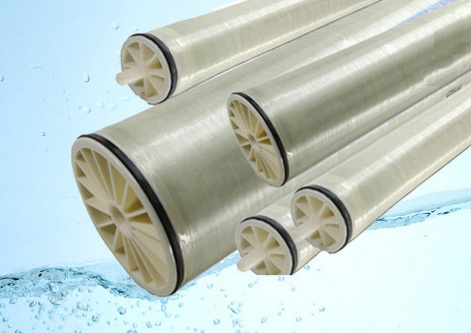Mathematical modeling will make desalination filters more efficient
28 November 2022 г.

The population of many regions of the world is experiencing a shortage of fresh water. According to forecasts, in the coming decades, under the influence of climate change and due to environmental degradation, the water crisis will become one of the leading threats to the lives of billions of people. Salt water desalination and wastewater treatment could be a possible solution to this problem. The most popular and convenient water desalination technology is reverse osmosis membrane technology. With its help, almost 70% of desalinated water is produced. Such installations are based on thin-film composite membranes that purify water from salts. The selective properties of such filters, in addition to technological characteristics, are also affected by pH and the composition of the separated solution, however, the complex nature of this effect is still poorly understood.
To eliminate this gap, the researchers of the Krasnoyarsk Science Center of SB RAS, together with colleagues from the Netherlands, developed a model of ion transport through a reverse osmosis polymer membrane. The model demonstrates the effect of feedwater pH on the membrane surface charge and helps evaluate its performance. Calculations make it possible to predict the selective properties of filtering membranes in the separation of solutions. The results can be used to produce more efficient filters and membrane elements.
The calculated data of Krasnoyarsk scientists were verified experimentally at the University of Twente (Netherlands), which is one of the world's centers of membrane science. The scientists found that the charge of the membrane and pH of the incoming water significantly affect the ion carrying capacity and the properties of the filtered water. At the same time, the feedwater pH also affects the ionization of the membrane surface: it is charged positively at a high concentration of hydrogen ions in the incoming water and negatively at a low one. Thus, a higher pH increases the charge of the membrane and its retention capacity for various minerals, in particular salt.
“The change in the charge of the membrane surface, and therefore the retention of salt ions, is highly dependent on the pH and composition of the feedwater. We have developed a model that relates the transfer of all ions to the selective properties of the membrane, which are determined by its charge. Our task was to ensure that the model could predict the selectivity and permeability of membranes for various ions depending on the magnitude of the flow and the initial salt concentration. We have found that polyamide membranes are weakly charged, but this small charge plays a key role in ion retention and influnces pH of the filtered water. With the help of the data obtained, it is possible to predict the mineral composition of the output stream, membrane performance and efficiency of the filter,” said Ilya Ryzhkov, Doctor of Physical and Mathematical Sciences, Leading Researcher at the Institute of Computational Modeling SB RAS.
In this study, the advanced skills of Krasnoyarsk scientists in the field of mathematical modeling were applied to solve a practically significant problem. They formed the basis of the experimental work of colleagues from the Netherlands. Since 2015, the Laboratory of Nanomaterials and Transport Processes of the Institute for Computational Modeling SB RAS has been developing the direction of mathematical modeling in the field of membrane processes. The laboratory team is also engaged in the creation of electrically conductive membranes and experimental study of the transport of ions through such membranes under the action of an electric field. The work of the laboratory has already received international recognition, and its head Ilya Ryzhkov was elected in 2022 the Chairman of the International Research Group "Physics of Membrane Processes".
Share:
